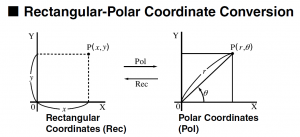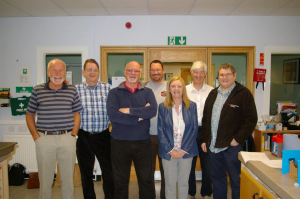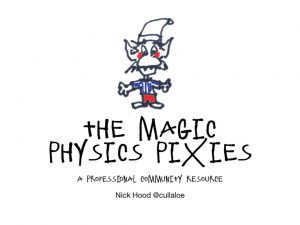
There was an interesting debate on the Physics forum a few months back about why Scottish school physics went down the electron flow route whereas everywhere else stuck with conventional current. Well one man, “our man in Aberdeen (as well as all over the place)” has done a great deal or research to get to the bottom of the query. Here is his edited reply.
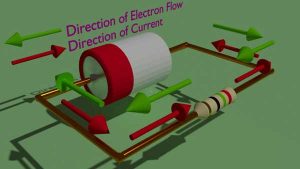
“I have wondered for some time what led to Scottish school physics education going down the electron flow route whereas everywhere else stuck with conventional current. I had put it down as an outcome of the very significant discussions about the nature of science education and subsequent curriculum development that took place in the 1960s, in much of the western world, initiated at least partly as a result of Sputnik being launched by the USSR.
Although I have no direct evidence I assume that conventional current was likely to have been used prior to the 1960s. As I see it there has been four significant periods of curriculum development in Scottish Physics education during the last sixty years.
1960s
There was the development of the Alternative O Grade and Higher Grade and the introduction of CSYS. I would wrap up these up with the developments that occurred following the publication of Curriculum Paper 7 and which led to the likes of Science for the 70’s and the Scottish Integrated Science project. The Alternative O Grade developments ran in parallel and overlapping with the Nuffield curriculum changes south of the border.
1980s
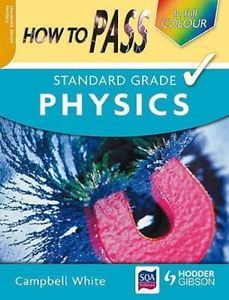
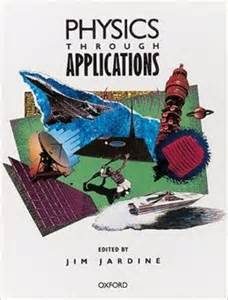
Standard Grade and an applications based approach and the tweaks to Higher and CSYS that followed. This did a great deal for the popularity and uptake of Physics.
1990s
Higher Still where the mantra was “minimum change” so the physics did not change much.
2010s
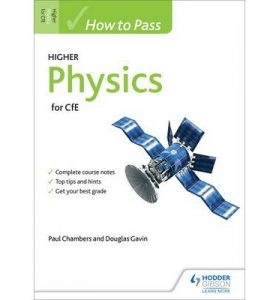
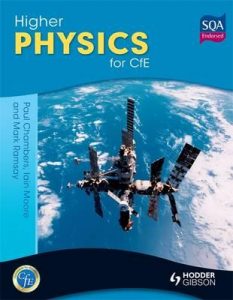
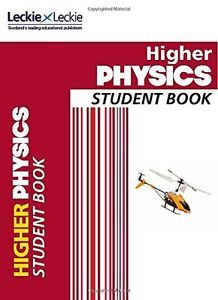
(NB Other text books are available!)
CfE (and the Revised courses before) where we have had a welcome refresh of the physics in the Senior Phase .
The move to the orthodoxy (I had better not use the term convention) of using electron flow seems to have been pretty much in place during my own education in the 1970s and certainly by the time I started teaching in the 1980s. Hence my assumption that it was one of the products of the developments around the introduction of the Alternative syllabuses of the 1960s along with things like tartan trolleys and ticker tape, Westminster electromagnetism kits, Teltron tubes and much else we have become very familiar with since.
I have done a bit of digging into my archive of publications to see what further clues I can find, but my hypothesis is that the shift occurred not so much with statements in published curriculum documents but in CPD and other activities associated with the implementations, and Jim Jardine’s influence on student teachers at Moray House.
Here is what I have found.
SCEEB (predecessor of SQA) First Cycle (S1/2 – and overlaps with Curriculum Paper 7 (1969), Second Cycle – O Grade and Third Cycle – Higher syllabus (1969) and update (1976).
Photos to follow
No mention of direction – all brief statements such as:
p37 Magnetic field of straight wire carrying current.
p37 Force on conductor (qualitative).
SCDS (predecessor of Education Scotland) Memorandum 31 Specific Objectives for Ordinary Grade Physics (1977)
No mention of direction – more specific statements interpreting what was published by SCEEB in 1976 such as:
p16 Recall that the direction of the force on a current-carrying conductor in a magnetic field depends on the directions of the current and the field.
It would appear that there was no preference for either convention in syllabus documents and there does not even appear to be an acknowledgement that two options exist.
Jim Jardine’s Physics is Fun Book 2 (1964)
Movement of charges, electrons and ions, is well covered in Chpt 2 from p15 but the first signs of electron flow being interpreted as a current appear on p37 in a section titled “Direction of Current”. “An electric current can be considered as a flow of negative charges (electrons) in one direction or a flow of positive charges in the opposite direction. We will usually represent it as a flow of electrons, particularly when dealing with electric current in wires. Black arrows will then be used to indicate flow of electrons. When dealing with the movement of positive charges arrows will be coloured red.”
Figure 89 then shows a circuit with black arrows on the wires labelled electrons indicating a current in the circuit.
In Physics is Fun Book 4 (1967) p58 the section uses black print to show streams of electrons in the case of magnetic fields around conductors.
Jim’s NatPhil ‘O’ (1973) continues to use the black and red two colour approach but there is definitely less of the red and in figures such as Fig12-4 on p109 it would be very easy just to interpret a current flowing negative to positive and to lose the distinction very clearly made in the Physics is Fun books. On p120-1 in the magnetism section reference is made to both positive charges and electrons and Fig 13-28 is of Fleming’s Motor Rule using conventional current. On p123-4 both black and red are used but the black dominates in appearance.
Nuffield Teachers’ Guide II (1966)
As part of a section dealing with the teaching of electricity the following appears on p40 “So far….we have not bothered very much with the direction of current. In future we shall adopt a universal agreement made a century ago.” All the Nuffield materials then go on to use conventional current but at times mentioning how electrons move as appropriate.
Science for the 70’s Book 1 (1971) on p111 in Unit 7 makes the statement “The electrons flow out along the wire connected to the negative terminal of the cell.” Otherwise the discussion is about relative brightness of lamps. However, in the Teachers’ Guide on p138 there is the Specific Objective:
“…the pupil should acquire:
2. the knowledge that current in a solid conductor is regarded as being a flow of electrons,”
In Science for the 70’s Book2 (1971) on p111 Figure 15.15 and the surrounding text uses conventional current to determine the direction of the magnetic field around a current carrying conductor. However, I very few people ever had enough time to reach Unit 15 in the time available for science in S1/2.
In the Scottish Integrated Science Worksheets and Teacher Guides (1977) there is no specific directionality on diagrams etc but in the Teachers’ Guide Sections 1 to 8 on p131 the Section Objective:
“All pupils should acquire:
2 the knowledge that current is a flow of charge (electron)”
There is also a recommendation to use the symbols and practices in SCDS Memorandum 5 Symbols and Terminology in Physics (Second Edition) (1975). Although this lists the conventions for writing quantity symbols and units and circuit symbols there does not appear to be any recommendation on current direction.
Cackett, Kennedy and Steven’s Core Physics (1979) on p184 it states “When we describe current in our circuits, we will be referring to the movement of electrons and this direction will be from negative to positive. In some textbooks the current is described as flowing from positive to negative. It is then often referred to as ‘conventional current’.” Arrows labelled I are then shown in subsequent figures in both circuits and magnetism sections.
Alistair Reid’s O-Grade Physics (1980) book current arrows on circuit diagrams going from negative to positive and the right hand rule in the magnetism section. I cannot see any reference to conventional current or electron flow it appears to just assume current is negative to positive.
David Standley’s SCE O Grade Physics (1983) book explains both conventional current and electron flow on p163 with a helpful diagram showing a conventional current arrow on the circuit wire and an electron flow arrow separate from the wire and avoids using direction arrows on figures. Conventional current is consistently used in the magnetism section (I might add that David taught in an independent school which also taught English syllabus courses which I am sure at least in part accounts for the difference in his approach).
So in conclusion, I think I have confirmed my hypothesis. Between the early 1960s and the early 1980s none of the syllabus or guidance documents state a requirement for one convention or another. However, following the lead taken in Jim Jardine’s Physics in Fun books the emphasis was increasingly placed on electron flow in metal conductors. Although Jim makes the distinction very clear in his early texts this is less so later on and in subsequent texts published by others in Scotland the idea that current is a flow of electrons becomes dominant. I suspect that by that time the subtle distinctions and teaching points that I am sure were discussed and considered very important by the committees involved during the development of the likes of the Alternative O Grade and Nuffield resources were forgotten in the mists of time. I suspect there must also have been CPD available when the Alternative Physics and Integrated Science courses were introduced that also promoted the use of electron flow. Hence we arrived at a point when I entered teaching that Scottish physics teachers just accepted currents in school physics as electron flows because “that was the way it is” without necessarily appreciating the underlying philosophy – it might even be an example of “group think”.
Our Man in Aberdeen and all over the place is Stuart Farmer. Head of Physics, Robert Gordon’s College, Aberdeen, United Kingdom. He has been awarded the 2016 Bragg Medal and prize of the Institute of Physics. He has been a member of the Association for Science Education (ASE) since he started teaching and has been its Chair of Trustees as well as Chair of ASE Scotland three times. Stuart is the Vice-chair of the Institute of Physics (IOP) in Scotland, a member of IOP’s Scottish Education Committee and the IOP’s Teacher Network Co-ordinator for Grampian and the Northern Isles.


![]()


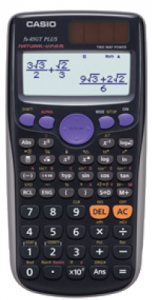
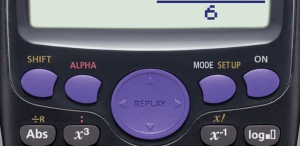


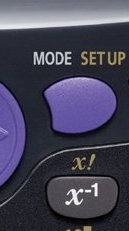 When you press the equals this gives the answer 28/5. This is indeed the right answer but the SQA does not like you leaving things as a fraction. So press the S<->D button to reveal the answer 5.6
When you press the equals this gives the answer 28/5. This is indeed the right answer but the SQA does not like you leaving things as a fraction. So press the S<->D button to reveal the answer 5.6 With this button we can easily add times together and convert between time and decimals of time.
With this button we can easily add times together and convert between time and decimals of time.